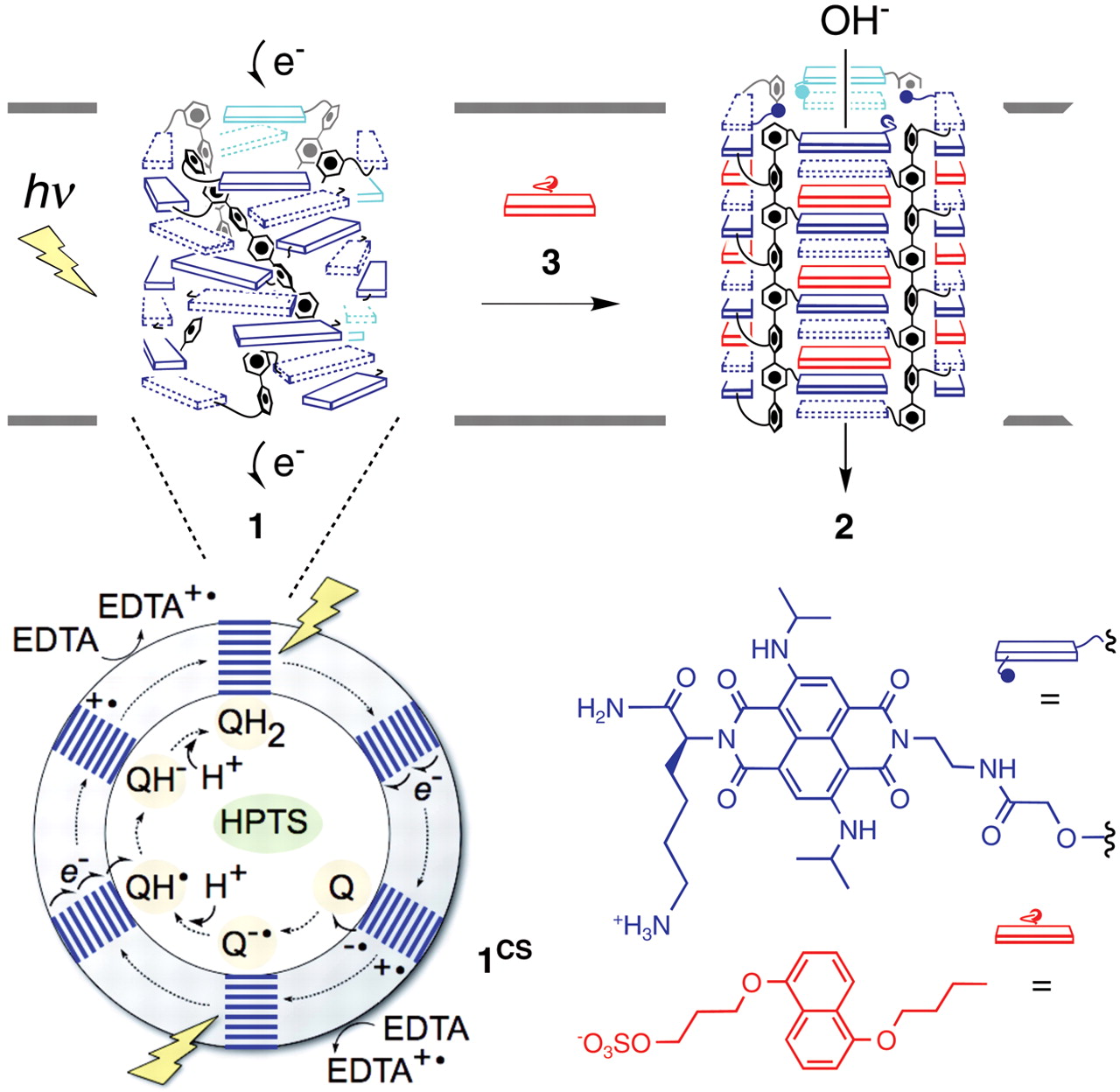Publications
-
Photoproduction of Proton Gradients with Pi-Stacked Fluorophore Scaffolds in Lipid Bilayers
Sheshanath Bhosale, Adam L. Sisson, Pinaki Talukdar, Alexandre Fürstenberg, Natalie Banerji, Eric Vauthey, Guillaume Bollot, Jiri Mareda, Cornelia Röger, Frank Würthner, Naomi Sakai and Stefan Matile
Science 2006, 313(5783), 84-86
 |
The excited-state dynamics of the DNA bisintercalator YOYO-1 and of two derivatives has been investigated using ultrafast fluorescence up-conversion and time-correlated single photon counting. The free dyes in water exist in two forms: nonaggregated dyes and intramolecular H-type aggregates, the latter form being only very weakly fluorescent because of excitonic interaction. The excited-state dynamics of the nonaggregated dyes is dominated by a nonradiative decay with a time constant of the order of 5 ps associated with large amplitude motion around the monomethine bridge of the cyanine chromophores. The strong fluorescence enhancement observed upon binding of the dyes to DNA is due to both the inhibition of this nonradiative deactivation of the nonaggregated dyes and the dissociation of the aggregates and thus to the disruption of the excitonic interaction. However, the interaction between the two chromophoric moieties in DNA is sufficient to enable ultrafast hopping of the excitation energy as revealed by the decay of the fluorescence anisotropy. Finally, these dyes act as solvation probes since a dynamic fluorescence Stokes shift was observed both in bulk water and in DNA. Very similar time scales were found in bulk water and in DNA.
Archive ouverte / Open archive: unige:3301
